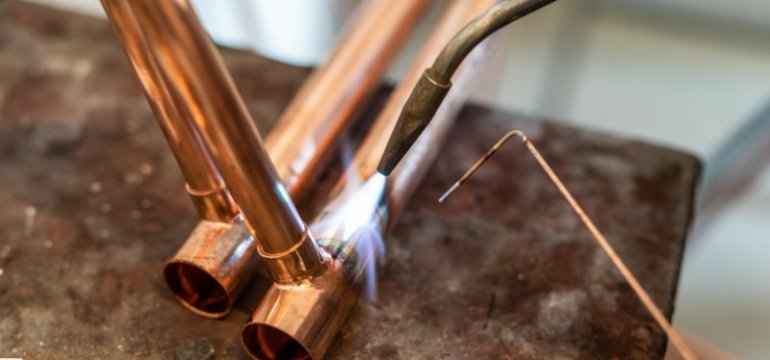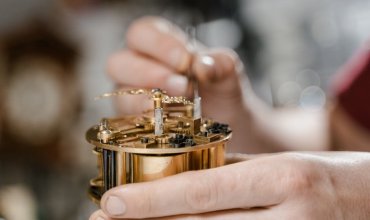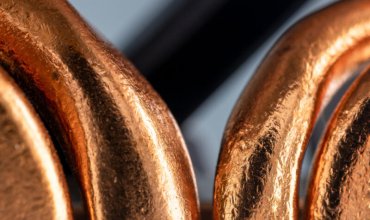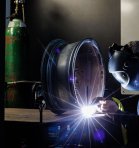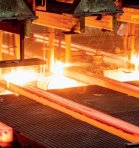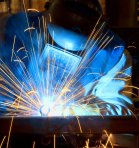Copper soldering is a skill that is vital not only for professional craftsmen, but also for do-it-yourselfers and hobbyists. This technique makes it possible to join copper components, which is crucial in many industries - from plumbing to electronics. In this comprehensive guide, we will discuss step-by-step how to solder copper, what tools and materials are needed, and what to pay attention to when performing this task. This article is primarily aimed at people in Poland, with local specifics and material availability.
Preparation for copper soldering
Choosing the right tools and materials
Soldering copper requires the right tools and materials to ensure a durable and safe connection. A basic copper soldering kit includes:
- Soldering iron or gas torch
- Soldering tin
- Flux (flux)
- A grinding wheel or steel brush
- Soldering nipples and leads
- Copper cleaner
Before soldering, it is important that all tools are fully operational and suitable for the specific task. The soldering iron should be able to reach a high enough temperature, and the soldering tin should be of good quality to ensure a strong connection.
Preparation of the copper surface
One of the most important steps in the process of how to solder copper is the proper preparation of the metal surface. Copper, like any other metal, can be covered with a layer of oxides, dirt or other impurities that can hinder the soldering process. To make sure that the connection will be strong and durable, the copper surface must be clean and properly prepared.
Abrasive wheels or steel brushes can be used to clean the copper. Hand-cleaning the surface by rubbing it will make it shiny and free of any impurities. In addition, it is a good idea to use special preparations for cleaning copper, which remove oxides and leave the surface perfectly prepared for soldering.
Flux application
Flux, also known as flux, is a key element in the process of how to solder copper. Its main purpose is to remove oxygen and other impurities from the copper surface, allowing the solder tin to adhere better to the metal. Flux also helps with heat propagation, which is important to ensure even heating of the surface.
Flux can come in various forms, such as paste, liquid or powder. The most common is flux paste, which is easy to spread on the copper surface. Simply apply a small amount of flux to the area to be soldered and spread it evenly.
Copper soldering technique
Warming up the copper
A key step in how to sold er copper is proper heating of the metal. The copper must reach the right temperature for the tin to melt and adhere to its surface. If the temperature is too low, the solder will not flow properly, which in turn can lead to poor connections.
When using a soldering iron, place its tip directly on the copper surface. If you are using a gas torch, aim the flame at the surface to be soldered. It is important to heat the copper evenly to avoid localized overheating or underheating. Controlling the heat is key - too high temperatures can damage the material, while too low temperatures will cause the solder not to adhere properly.
Using solder tin
Once the copper has been properly heated, it's time to apply the solder tin. The tin should adhere to the surface of the copper, forming a strong and durable connection. At this point, it is worth remembering that the tin should not be applied directly to the soldering iron tip, but to the heated copper surface. This will ensure that the solder is evenly distributed and that the physical connection is permanent.
To apply the tin, touch the spool of tin to the area that was previously heated. The tin should dissolve and flow over the surface of the copper, forming a uniform, shiny layer. If the tin does not flow properly, it may mean that the copper is not heated enough or that the surface has not been properly prepared.
Applications and practical tips
Soldering copper pipes
One of the most common applications of copper soldering is connecting copper pipes in plumbing systems. The process of how to sold er copper in this case is not significantly different from soldering small components, but it requires a little more precision and experience.
Copper pipes must be thoroughly cleaned and properly cut to fit perfectly together. The use of flux is essential, as is even heating of the surface. It's also important to avoid overheating the tubes, which can lead to deformation of the tubes, which can lead to leaky connections.
Soldering electronics
Copper soldering is also crucial in the field of electronics, where precision and quality of connections are of paramount importance. The process requires smaller tools and greater precision, especially when soldering small electronic components.
In this case, it is crucial to use thin solder tin to ensure accurate and durable connections. The soldering iron should be equipped with a thin tip, allowing precise heating of small surfaces. The use of flux is also extremely important - it avoids cold solder and ensures proper adhesion of the tin.
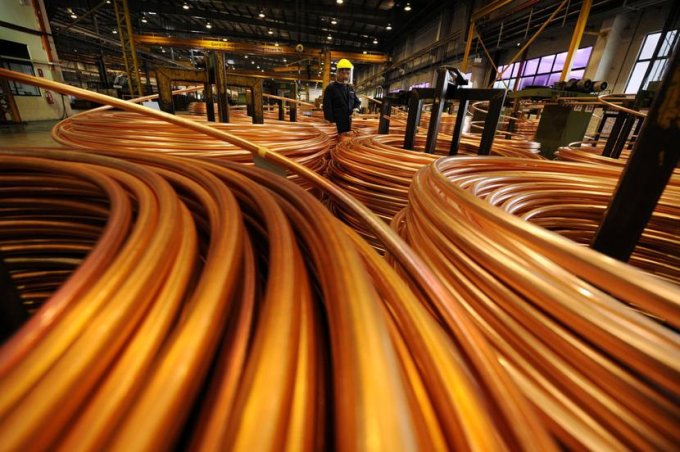
Other applications of copper soldering
Copper soldering is used in many other fields, such as jewelry making, repairing copperware or creating artistic copper projects. In each of these cases, the technique of how to sold er copper may vary slightly, but the basic principles remain the same.
The most common mistakes made when soldering copper
Insufficient cleaning of the surface
One of the most common mistakes that can occur when soldering copper is insufficient surface cleaning. Even small contaminants can prevent tin from adhering, leading to poor connections. To avoid this, always clean the copper thoroughly with a grinding wheel or steel brush and use the appropriate chemicals.
Soldering iron temperature too low
Another common problem is insufficient heating of copper. If the temperature of the soldering iron is too low, the tin will not be able to adhere properly to the metal. It is always a good idea to make sure that the soldering iron or gas torch is able to reach the right temperature to ensure effective soldering.
Using the wrong flux
Flux plays a key role in the soldering process, and using the wrong flux can lead to problems. Too little flux may not remove all contaminants, while too much flux can cause excessive heating and surface damage. It is important to always use the right amount of flux and distribute it evenly.
Safety when soldering copper
Personal protection
Soldering copper involves high temperatures and potential health risks. Therefore, it is extremely important to use appropriate personal protective equipment. Always use protective gloves, safety glasses and appropriate protective clothing to minimize the risk of burns and other injuries.
Ventilation and fire protection measures
When soldering copper, especially with a gas torch, it is important to ensure that the room is properly ventilated. Smoke and fumes can be harmful to health, so it is advisable to work in a well-ventilated area or use special fume hoods.
In addition, due to high temperatures and the risk of fire, you should always have a fire extinguisher and other fire protection equipment nearby. Following these rules will help ensure safe and effective soldering.
Summary
Copper soldering is an extremely important skill that is used in many fields - from plumbing to electronics to jewelry and art. Following proper techniques and using the right tools and materials is key to ensuring durable and reliable connections.
In this article, we discuss in detail how to solder copper, from surface preparation, heating and using solder tin, to practical tips and the most common mistakes. Let's also keep in mind the safety aspects so that each step of the work is not only effective, but also safe.
If you want to learn how to solder copper, remember that practice makes perfect. Start with simple projects, and over time you will gain experience and confidence in this skill. Soldering copper can be not only practical, but also rewarding, giving you the opportunity to create and repair various items with your own hands.


